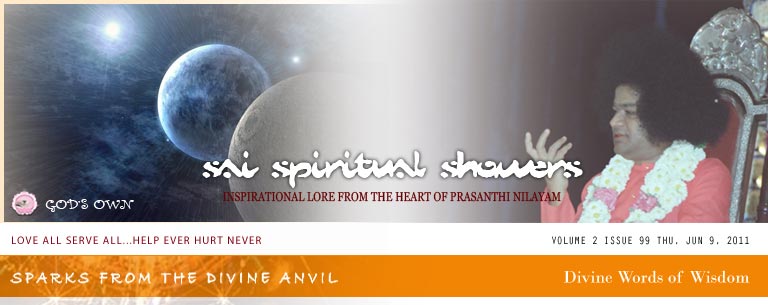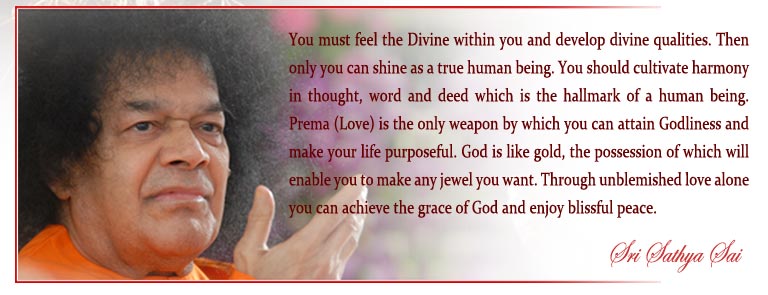 |
 |

The Puranas speak of Fourteen Lokas. People have adopted the superficial meaning of the names given to these and they classify them into sacred lokas and condemned lokas,—Deva Lokas and Patala Lokas. But, all these lokas do exist in reality, in our own bodies, the bodies which we carry about and care for, seven in the upper part and seven in the lower part. Which is the upper part of the human body? It is the head, the Trikuta Peak, the Crown, the Higher Region. Seven lokas are situated therein. They are the Garuda Loka, the Gandharva Loka, the Yaksha Loka, the Kinnara Loka and the Kimpurusha Loka. They are all situated in the Head. The Garuda Loka is in the Nose, the seat of inhalation and exhalation. The Gandharva Loka is in the Eye. The Yaksha Loka is in the tongue. Kinnara Loka is in the Ear and the Kimpurusha, the skin, seat of the Sense of Touch. Though the names of the Lokas are five, there are seven regions to which the name applies. The Nose is the first, the eyes are the second and the third, the tongue is the fourth, the ears are the fifth and the sixth, and the skin, the seventh. These seven are the Upper Lokas. Those who sanctify these lokas by recognising the respective organs as instruments for higher ideals can be deemed worthy of human existence. That is to say, inhaling unpolluted air, seeing auspicious sights, hearing heartening sounds, etc. These Lokas when properly cultivated, can make man divine. Dost thou know why you are given eyes? We have to cast our looks at sacred sights. We must visualise in every one only the good and the godly. That is the purpose for which God has equipped us with eyes. He has not gifted them to us to observe and judge others, to follow people into the bazaar, to see unsightly things like films. Dost thou know why you have a tongue? The prime purpose is not to enable us to swallow our meals. The object is to utter holy words. When some one is narrating some good incidents, the ears show no inclination to listen. But when one whispers something confidential to another, the ears jointly seek to overhear. Is it for this that God has blessed us with ears? Therefore, the seven higher lokas have to be utilised for Divine ends. When that is done, one becomes divinised, one is liberated. The rest of the Lokas are intended for the maintenance of the physical frame in which we are enclosed. The stomach is the petrol tank, so to say. When that is filled, every limb and cell of the body is supplied with energy and activised, to execute the beneficial duties assigned to each. With the two hands and the two legs, these make five lokas. The two others are the anal and the urinal parts. These Seven nether Lokas maintain the physical body. Both the higher seven and the lower seven are necessary; they complement each other. The lower lokas are the Patala lokas according to Puranas. They form the foundation, the base. Those who long for flowers and fruits have to feed the unseen roots. Patala too should not be neglected merely because they are described as "low". Joy has to be churned from grief. Pleasure is a product of pain.
|
 |